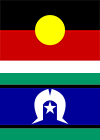Professional Footballers Australia (the PFA) has today released its PFA A-League Women (ALW) 2024-25 Report, highlighting a critical juncture for the competition and the urgent need for change to secure the League’s future.
The Report reveals that the ALW continues to fall further behind leading women’s football leagues globally and other domestic women’s competitions, accelerating the League’s talent drain during the off-season.
Findings from the PFA’s end-of-season survey reveal the ALW is now the least preferred league among its players, while minimum salaries, which were once amongst the highest in Australia, are now the lowest of any major Australian women’s sport.
At the same time, the Report highlights the growing economic opportunity for the ALW, with fan revenues and football revenues projected to far exceed the cost of professionalising the League should clubs make that investment.
Click here to download the PFA’s 2024-25 A-League Women Report
“The ALW has reached a tipping point,” PFA Chief Executive Beau Busch said. “Without urgent investment and a plan to transition to full-time professionalism by next season, the League risks losing more talent, continuing the damaging cycle of part-time commitments on players, and compromising its connection with fans.
“This Report is an urgent call to action for an industry that is failing to recognise the scale of the opportunity before it. Importantly, it is not too late to do so.
“The business case is clear – the smart money is on women’s sport and especially football. With the Asian Cup in Australia kicking off in a little over 100 days, the game can take the necessary leap to full-time professionalisation and capitalise on the biggest opportunity in Australian sport.”
PFA Co-President and Brisbane Roar midfielder Tameka Yallop said: “Women’s leagues around the world are grabbing hold of that potential and moving forward and… refocusing so that they are taking those opportunities when presented to them.
“We had that massive opportunity with the World Cup and we did see a little bit of growth, but there wasn’t any hard sort of platform laid down for it to continue to grow. It was just piggybacking rather than laying the foundations that we needed to lift this league and elevate it.”
Adelaide United midfielder and PFA Executive Committee Member Dylan Holmes said: “There’s a very genuine belief through the players that this league has so much potential, and it has the potential to be one of the best leagues in the world, if not the best league in Asia. But the consensus among the players is that there’s not enough being done to realise that potential when the opportunities are clearly there.”
Canberra United’s Sasha Grove said: “Professionalising the A-League would provide me the security to focus on football full-time. For many players the part-time nature of the ALW creates a lot of uncertainty when it comes to the off-season. Many players are left in the dark when it comes to off-season training and whether or not they will be able to get a contract for the next season. This massively takes away from our ability to grow the women’s game, increase its visibility, and promote domestic talent.
“The post-Asian Cup period provides an opportunity to meaningfully grow the women’s game. Professionalising the ALW during this period is absolutely necessary to keep Australian football in the spotlight and make a strong statement on the support for women’s football and the intention to lift it to greater heights.”
Key Findings from the PFA’s Report Include:
The ALW talent drain has intensified
Clubs are increasingly losing players to leagues outside the world’s best, and being forced to recruit from European second, third, and even fifth-tier leagues. The traditional player pipeline from the United States has dried up as the professional football footprint in North America expands.
The ALW’s youth skew has increased
Players aged 21 and under accounted for 32% of match minutes in 2024-25, up from 28% last season. The share of match minutes being played by teenagers rose to 18% in 2024-25 from 15% in 2023-24.
Financial insecurity remains alarmingly high for players
Despite record total player payments of $8.7 million, 76% of players reported their financial situation as ‘not at all’ or only ‘slightly’ secure. 62% worked outside football during the 2024-25 season. The League’s average salary is just over $30,000.
Players prefer an Independent Commission to govern the League
Two in five players expressed dissatisfaction with the Australian Professional Leagues (APL), and 61% support an independent commission to oversee the competition.
While the challenges are significant, the Report also identifies major opportunities for growth. Global investment in women’s football is accelerating, with the transfer market projected to exceed $200 million by 2027.
By embracing full-time professionalisation and securing multi-year contracts, ALW clubs could capture a greater share of this booming market, potentially more than $10 million annually in transfer fees alone.
Prize money for the AFC Women’s Champions League and new FIFA women’s club competitions present another revenue opportunity that will aid the transition to full-time professionalisation.
The PFA will be releasing a players’ vision for the A-League Women in the coming weeks.







